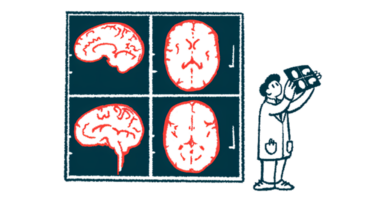Chronic inflammatory lesions linked to more aggressive MS in US study
Greater relapse burden, more disability seen with brain lesions over 10 years

The presence in the brain of chronic inflammatory lesions — called paramagnetic rim lesions (PRLs) — in people with multiple sclerosis (MS) is associated with a greater relapse burden and faster disability progression in the long term, according to a new U.S. study.
Among more than 150 patients who were followed for an average of about 10 years, more PRLs also were associated with disability progression that occurred in the absence of disease relapses.
“These results provide evidence that PRLs are a marker of a more aggressive active disease course,” the researchers wrote.
Altogether, the team noted, the study’s “findings may indicate that PRLs are the characteristic of a state of inflammation (acute and chronic) proceeding the progressive form of MS.”
The study, “Paramagnetic rim lesions predict greater longterm relapse rates and clinical progression over 10 years,” was published in the Multiple Sclerosis Journal.
Researchers used results from MRI scans in analysis
MRI imaging scans on MS patients may show various types of brain lesions — areas where tissue has been damaged due to autoimmune attacks.
Active lesions reflect areas of ongoing inflammation, where the immune system is currently attacking the tissue. These give way to inactive lesions, in which there is tissue damage from such a previous attack, but no longer any active inflammation.
PRLs are a unique type of lesion seen in MS that reflect areas of chronic, unresolved inflammation. Also known as smoldering lesions, PRLs have been associated with greater disability and more relapses.
Given these relationships, PRLs found early in the disease course have emerged as possible predictors of disease progression in MS patients. However, earlier studies have been limited by factors such as short follow-up time and small numbers of patients, according to the authors.
“It remains unclear whether PRLs are a biomarker for a more aggressive disease course over timeframes relevant to long-term disease progression ([such as] 10 years,” the team of researchers, from the Jacobs School of Medicine and Biomedical Sciences at the State University of New York, Buffalo, wrote in the study.
To examine whether PRLs were associated with long-term disability progression and relapse frequency, the team conducted a retrospective analysis of data from 172 adults with MS who had previously participated in a larger clinical study. The patients had a mean age of 47.3 at the study’s start, or baseline.
Altogether, they had a total of 1,868 annual clinic visits over a mean follow-up time of 10.2 years. Most patients (71.5%) had a diagnosis of relapsing-remitting MS (RRMS).
Half of the participants had at least one PRL at the baseline MRI scan. Among PRL-positive patients, the mean number of such lesions was 4.1.
Risk of relapse 3 times higher for patients with inflammatory lesions at start
In the final analyses, the annual number of relapses over follow-up was significantly greater in PRL-positive patients than in PRL-negative patients (0.14 vs. 0.06) — regardless of the number of PRLs seen at baseline.
Likewise, the risk of relapse over follow-up was more than three times higher in patients who had PRLs at baseline. That risk rose to more than six times higher in patients with four or more PRLs.
A greater proportion of PRL-positive patients who had RRMS or clinically isolated syndrome at baseline converted to a secondary progressive disease course over follow-up than among PRL-negative patients (50% vs. 28.6%).
To make sure that didn’t influence the findings, the scientists performed the relapse analysis only in patients who did not convert, and found that higher relapse rates were still associated with baseline PRLs.
These results provide evidence that PRLs [chronic inflammatory lesions] are associated with relapse-independent [disease] progression, in addition to greater acute inflammatory (i.e. relapse) activity.
The chronic inflammatory lesions also were associated with a faster rate of disability progression. Specifically, PRL-positive patients accumulated an additional 0.046 points per year on the Expanded Disability Status Scale (EDSS) compared with those without them. A faster rate of change was observed in patients with a greater number of PRLs.
For people with relapsing forms of MS, disability progression can often be attributed directly to the effects of relapses. Still, it is increasingly recognized that patients also may experience disease progression independent of relapse activity — called PIRA — where disability may accumulate even when relapses don’t occur.
Consistent with earlier research, the scientists found that having more PRLs was linked to greater odds of experiencing at least one episode of PIRA throughout the follow-up period. The overall link between PRLs and disability progression was largely independent of the number of relapses, with relapses only accounting for about 3.3% of the relationship.
“These results provide evidence that PRLs are associated with relapse-independent EDSS progression, in addition to greater acute inflammatory (i.e. relapse) activity,” the researchers wrote.
“It is likely that this relapse-independent effect is driven by gradual tissue destruction due to chronic active inflammation,” they added.
The scientists noted that despite the retrospective and observational nature of the study, the findings altogether replicate those from previous reports.
“Future prospective studies are needed to confirm our initial results,” the team concluded.








